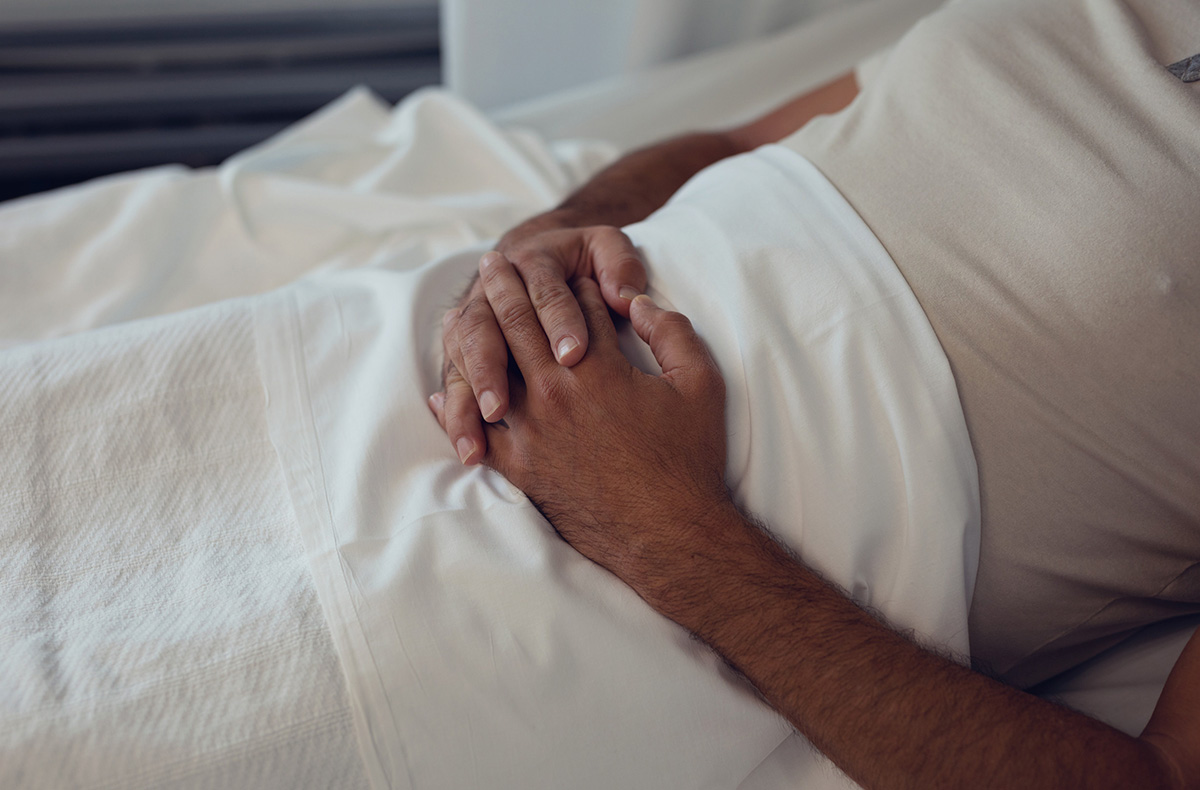The prostate is an organ that belongs to the male genital system, but is located around the urethra, between the bladder neck and the external sphincter, like a "collar". Its main function is to manufacture seminal fluid, together with the seminal vesicles. This fluid contains many nutritive substances that serve as food for the spermatozoa. It also has an alkaline pH, which serves to counteract the acidic pH of the female vagina. In this way, when male ejaculation occurs, the seminal fluid is eliminated together with the spermatozoa, which "swim" in it, thus protecting them as they pass through the vagina and at the same time nourishing them so that they can advance to the uterus.
As for sperm, they are not produced in the prostate, but in the testicles. Once they are made, they leave the testicle and reach the prostate by travelling inside tubes called "vas deferens". The two vas deferens, one on each side, connect the testicles to the prostate. It is precisely these tubes that are cut when a vasectomy, one of the most effective methods of contraception, is performed. When, for various reasons (genetics, epigenetics, age, etc.), the prostate enlarges, it can compress the urethra and cause an obstruction, making it difficult to empty the bladder. Sometimes, this emptying is incomplete and leads to chronic urinary retention with a high post-micturition residue, which is a risk factor for urinary tract infections, as stagnant urine is an excellent breeding ground for the development of the micro-organisms that cause them.
Bibliography:
Arponen S (2021). Es la microbiota, idiota. Alienta.
Godaly G, Ambite I, Svanborg C. Innate immunity and genetic determinants of urinary tract infection susceptibility. Curr Opin Infect Dis. 2015 Feb;28(1):88-96.
Lacerda Mariano L, Ingersoll MA. Bladder resident macrophages: Mucosal sentinels. Cell Immunol. 2018 Aug;330:136-141.
Song J, Abraham SN. TLR-mediated immune responses in the urinary tract. Curr Opin Microbiol. 2008 Feb;11(1):66-73.
Becknell B, Ching C, Spencer JD. The Responses of the Ribonuclease A Superfamily to Urinary Tract Infection. Front Immunol. 2019 Nov 29;10:2786.
Steigedal M, Marstad A, Haug M, Damås JK, Strong RK, et al. Lipocalin 2 imparts selective pressure on bacterial growth in the bladder and is elevated in women with urinary tract infection. J Immunol. 2014 Dec 15;193(12):6081-9.
Ueda N, Kondo M, Takezawa K, Kiuchi H, Sekii Y, et al. Bladder urothelium converts bacterial lipopolysaccharide information into neural signaling via an ATP-mediated pathway to enhance the micturition reflex for rapid defense. Sci Rep. 2020 Dec 3;10(1):21167.
Hayes BW, Abraham SN. Innate Immune Responses to Bladder Infection. Microbiol Spectr. 2016 Dec;4(6):10.1128/microbiolspec.UTI-0024-2016.
O’Brien VP, Hannan TJ, Schaeffer AJ, Hultgren SJ. Are you experienced? Understanding bladder innate immunity in the context of recurrent urinary tract infection. Curr Opin Infect Dis. 2015 Feb;28(1):97-105.
Huang J, Fu L, Huang J, Zhao J, Zhang X, et al. Group 3 Innate Lymphoid Cells Protect the Host from the Uropathogenic Escherichia coli Infection in the Bladder. Adv Sci (Weinh). 2022 Feb;9(6):e2103303.
Wu J, Abraham SN. The Roles of T cells in Bladder Pathologies. Trends Immunol. 2021 Mar;42(3):248-260.
Billips BK, Schaeffer AJ, Klumpp DJ. Molecular basis of uropathogenic Escherichia coli evasion of the innate immune response in the bladder. Infect Immun. 2008 Sep;76(9):3891-900.
Nielsen KL, Stegger M, Kiil K, Godfrey PA, Feldgarden M, Lilje B, Andersen PS, Frimodt-Møller N. Whole-genome comparison of urinary pathogenic Escherichia coli and faecal isolates of UTI patients and healthy controls. Int J Med Microbiol. 2017 Dec;307(8):497-507.
Ambite I, Butler D, Wan MLY, Rosenblad T, Tran TH, Chao SM, Svanborg C. Molecular determinants of disease severity in urinary tract infection. Nat Rev Urol. 2021 Aug;18(8):468-486.
Ziegler T, Jacobsohn N, Fünfstück R. Correlation between blood group phenotype and virulence properties of Escherichia coli in patients with chronic urinary tract infection. Int J Antimicrob Agents. 2004 Sep;24 Suppl 1:S70-5.
Sulaiman KA, Al Qahtani N, Al Muqrin M, Al Dossari M, Al Wabel A, et al. The correlation between non-O blood group type and recurrent catheter-associated urinary tract infections in critically ill patients: A retrospective study. J Int Med Res. 2022 Jul;50(7):3000605221108082.
Albracht CD, Hreha TN, Hunstad DA. Sex effects in pyelonephritis. Pediatr Nephrol. 2021 Mar;36(3):507-515.
Wnorowska U, Piktel E, Deptuła P, Wollny T, Król G, et al. Ceragenin CSA-13 displays high antibacterial efficiency in a mouse model of urinary tract infection. Sci Rep. 2022 Nov 10;12(1):19164.

